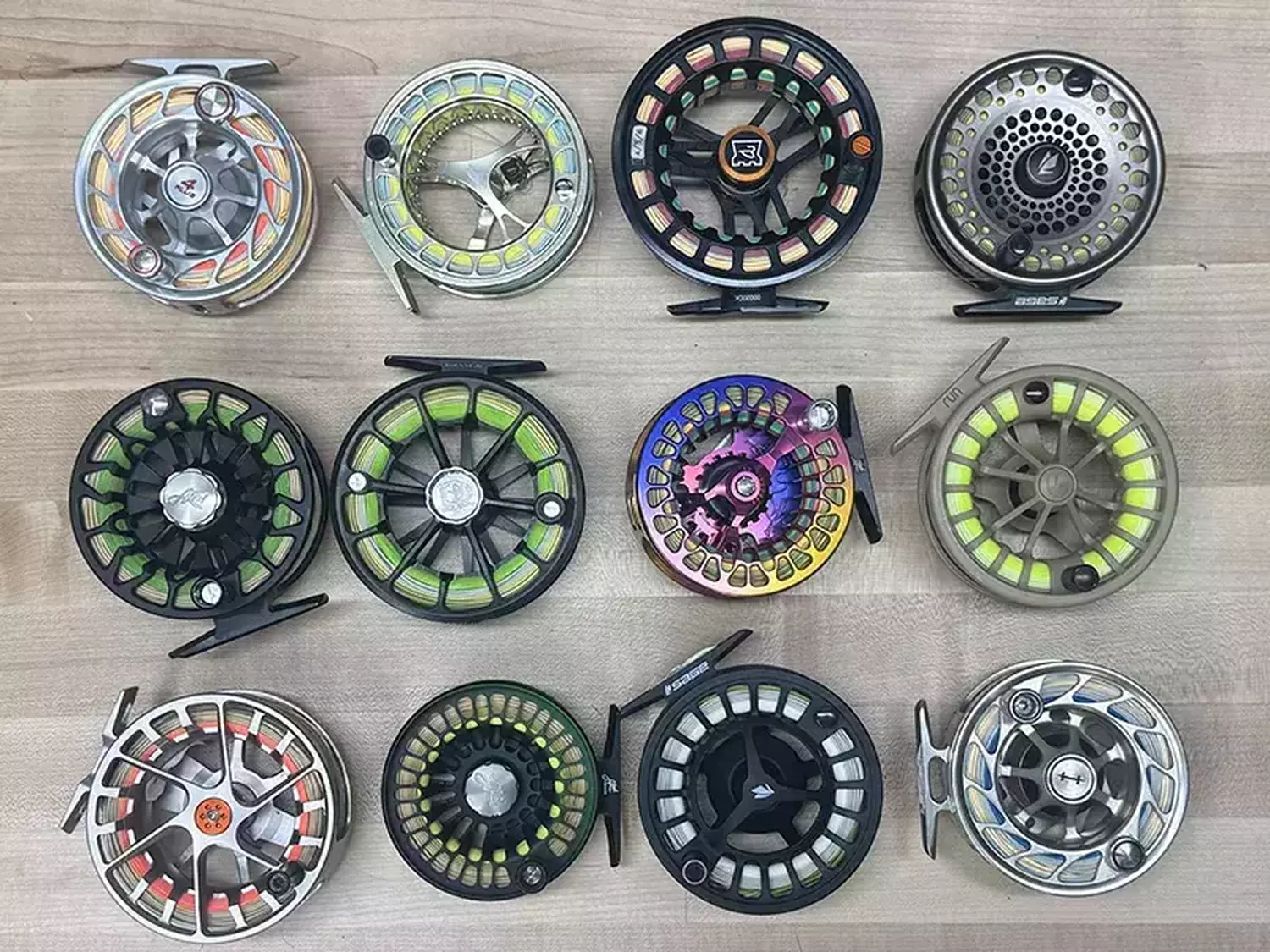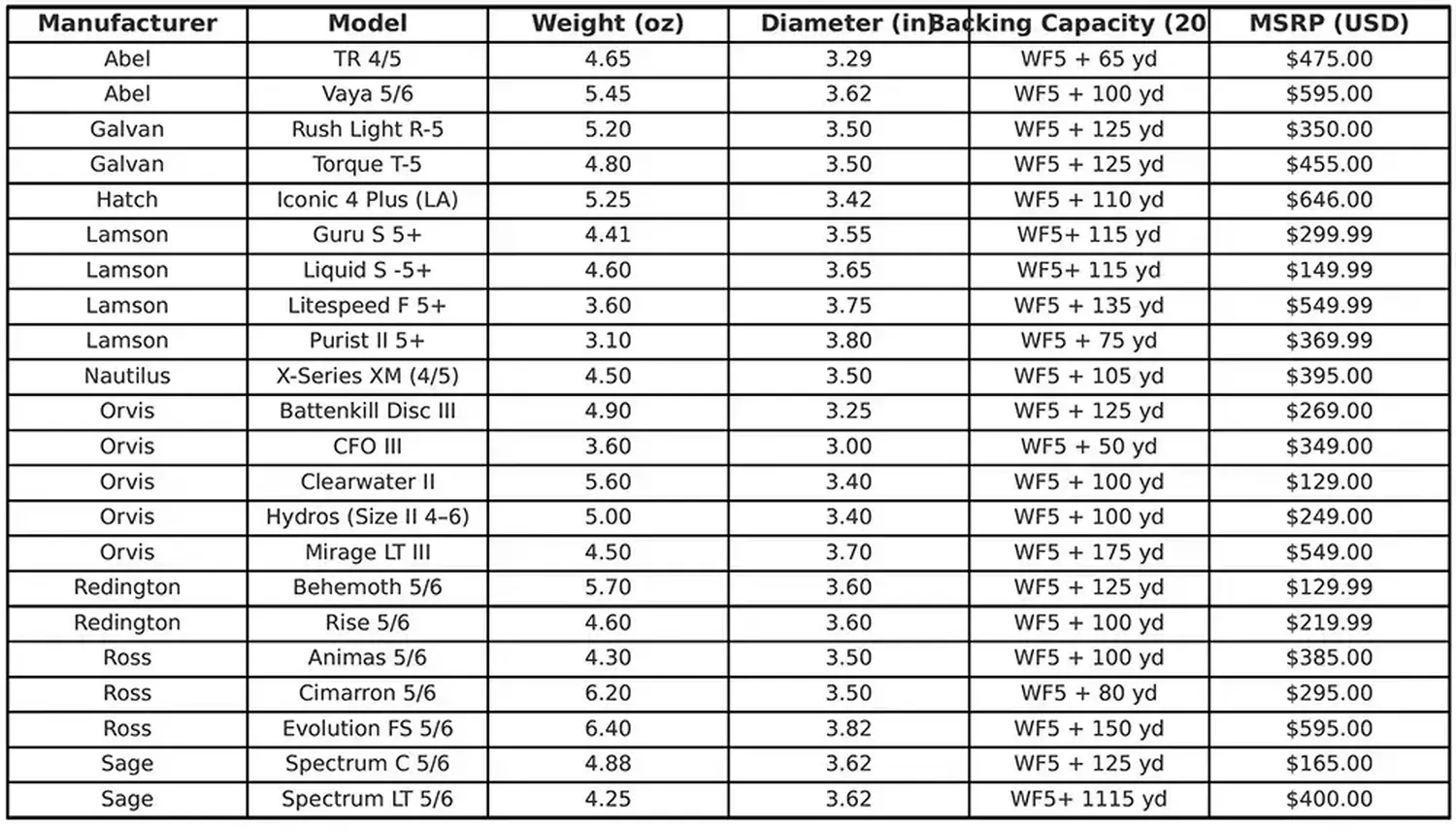Pro Tips on Choosing a Fly Reel
Posted by: Alex
Date: 09/07/2025
Choosing the right fly reel is essential for fly fishing in Montana, where our rivers range from large freestones to technical spring creeks. A good reel balances your rod, delivers smooth drag, and stands up to the varied conditions of our local waters.

Choosing A Reel for Fly Fishing In Montana
A fly reel should balance your rod, have a smooth drag, and be able to withstand long days on the water, year after year. With numerous options available, understanding the key features helps ensure that you are properly equipped for the variable Bozeman fly fishing conditions that anglers are likely to encounter. Reels are the most complex element of any on-the-water fly fishing gear kit. Always opt for smooth operating, durable, and low-maintenance options so you can focus on fishing rather than your gear!
Here are a few essential aspects to keep in mind when choosing an all-around fly reel for fly fishing in Montana.
Machined and Cast Construction
Fly reels are generally made one of two ways: cast or machined. Cast reels are poured into molds, which keeps costs lower and makes them a practical choice for price-sensitive anglers. They’re a good starting point if you’re unsure of how deep you’ll go into fly fishing and don’t want to overspend right away. The trade-off is that cast reels are heavier and more brittle than machined reels, making them less durable over the long haul.
Machined reels, on the other hand, are cut from a solid puck of aluminum. Machined fly reels are stronger, lighter, and far more precise than cast reels. They outperform cast reels in every way: durability, weight, and long-term performance. If you accidentally drop one on the rocks or in the drift-boat, you’re far less likely to warp the frame or damage the reel. While they do cost more, machined reels are built to last and are generally worth the investment.
Arbor Size
The arbor is the center spool of the reel where line and backing are stored, and its size affects both performance and capacity.
Large-arbor reels pick up line faster, reduce line memory, and make it easier to manage fish that make long runs. They’ve become the fly fishing industry standard for most trout reels because they’re efficient, look great, and practical. The “knock” on large arbor reels used to be that their backing capacity was limited; however, most modern large arbor reels today will easily accommodate 75-100 yards of 20-pound Dacron.
Standard and mid-arbor reels are still around, and they’re far from obsolete. While they don’t pick up fly line as quickly, they provide extra backing capacity and often come in aesthetically pleasing designs with a classic look. If backing capacity or traditional aesthetics are essential, anglers fishing in Montana should consider reels with smaller arbors.
Drag Systems
In the context of a fly reel, drag refers to the mechanism used to provide and control this resistance. Variables such as the drag surface materials, adjustable range of tension, and even the sound they produce are all worth considering when evaluating a drag system.
Drag is the resistance a reel provides when line is pulled off the arbor, both while casting and when fighting a fish. Some level of resistance is essential to prevent the reel from “free spooling” when pulling line off to cast. Most anglers who fly fish in Montana today prefer a reel with an adjustable drag that allows for easy adjustment to deliver precise resistance when needed.
Consumers will often find that retailers and manufacturers clearly indicate whether a reel is sealed or not, differentiating between models at various price points.
Sealed Drag
Sealed drag reels are designed to keep out water, grit, and dust, making them low-maintenance and durable. Spend a day wading the legendary Madison or Gallatin rivers after high water and anglers quickly appreciate a fully sealed drag. Sand and mud are everywhere during runoff season, and a sealed drag keeps the “guts” of the reel smooth and functional. Generally more expensive, a sealed drag provides smooth, consistent performance with minimal upkeep.
Sealed drags are preferred in saltwater fly fishing as they protect the internal mechanics from corrosion with less maintenance.
Most modern sealed drag systems work by controlling the friction between internal discs as resistance is applied. Seals keep these drag surfaces free of sand and grit, which is essential to their effectiveness.
Non-Sealed Drag
Reels with unsealed drags are less expensive and simpler in design. For the freshwater fisheries like those found in Montana, a sealed drag system isn’t essential— non-sealed drags are more than adequate for trout. They may require occasional maintenance such as lubricating external parts, but many anglers value their straightforward design, dependable function, and lower price point.
Non-sealed drags vary in complexity, ranging from a simple click-and-pawl spring design to highly engineered disc braking systems. Regardless of the mechanism, some level of adjustment is desirable for anglers fishing our Bozeman home waters.
Sizing
Fly reel models are often available in a few different sizes, designed to pair with a narrow size range of fly rods. This designation varies among manufacturers, so it is essential to review the key specifications to ensure an overall balanced setup. Most anglers prefer a setup that balances near the cork grip on the rod. Reels that are too heavy or too light can hinder the “feel” of a fly rod when loading during casting strokes.
The best recommendation for beginner anglers looking to purchase a reel for a 5-weight fly rod is to start with reels that are around 3.5” in diameter and 5 ounces in weight. Compare a few heavier and lighter models to find the balanced feel that you prefer, and remember that backing capacity should be around 100 yards of 20-pound Dacron when making comparisons.
Comparing Popular Fly Reels For Fly Fishing in Montana

Choose The Best You Can Afford
Fly reels are functionally complex in both design and function. Although often thought of as simple “line holders” in the trout fly fishing world, this is far from the truth. Product developers and engineers rely on modern technology and advanced materials to deliver fly reels that are as pleasing to fish with as they are functional.
Fins and Feathers Guide Service has been immersed in the fly fishing industry for over two decades as Bozeman fly fishing guides. During that time, we have taught countless beginner anglers how to fly fish and sold thousands of fly reels to anglers around the world before selling our fly shop in 2022. We understand that selecting a fly reel can be overwhelming when faced with a display case filled with 50-200 reels staring back at you.
You can find a price point that you are comfortable with and then compare a few models to find the reel that fits your style and functional demands. All major manufacturers offer reliable fly reels with excellent warranties today. We always lean towards reels that are made in the USA, fully machined, and utilize some variation of an adjustable disc drag.
Some of the leading brands of fly reels in the trout fishing space include Hatch, Abel, Ross, Hardy, Lamson, Galvan, Orvis, Nautilus, Sage, and Redington. We generally avoid “private label” fly reels popular with big box and online-only retailers, as their construction is typically driven by price rather than performance.




